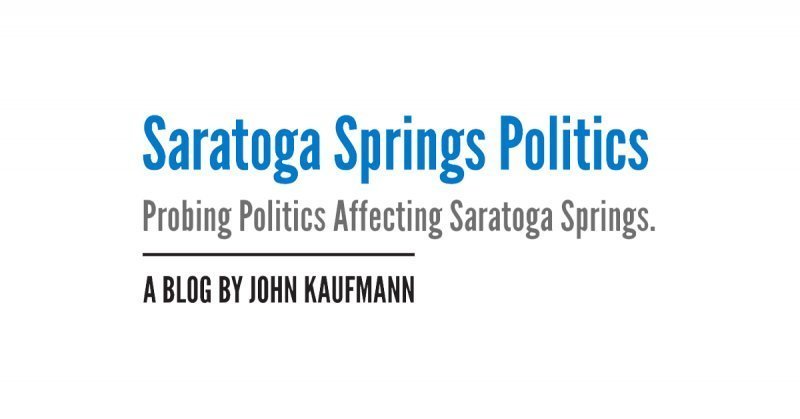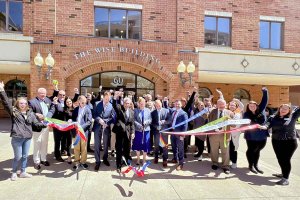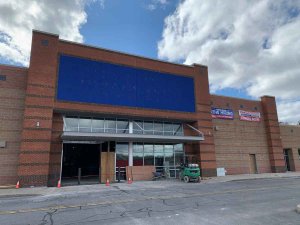[JK: Jim Martinez is a registered architect and lifelong resident of Saratoga Springs. A stalwart preservationist and founding member of the Saratoga Springs Preservation Foundation, he has authored many articles about our surviving resources and their stewardship.]
The COVID-19 emergency declarations will end on 11 May 2023. This follows Governor Hochul’s announcement on 15 June 2021, that social distancing requirements and seating distance in restaurants would no longer be needed. Yet today, just shy of 2 years of that proclamation, we are still accommodating extra seating for select businesses in the public rights-of-way (ROW) to lessees and property owners, reducing and in some cases ignoring sidewalk Fire Code and City Code requirements, eliminating valuable public parking and challenging the distinguished visual landscape of our heralded historic downtown district.
Pandemic emergency responses aside, should we question the legitimacy of the taking of public land for private use? The Design Review Board (DRB) was given design review and approval of the outdoor dining corrals, but the legitimacy of the construction barriers was off the table. At their March 3rd meeting, the DRB were issued prescriptive guidelines as they were presented with 12 applications and a new sidewalk removal request. Were these guidelines vetted by the community, the preservationists or by the Departments of Public Works and Public Safety that might impart code compliance standards? The DRB was informed that the approval and review of these barriers was not part of their charge, instead to simply comment on their compatibility with guidelines questionably unfit for our historic and sacred downtown. The DRB should find them unacceptable in our once great city center.
The issue overlooked by design was the legitimacy of the concrete barriers recently purchased by the city for the express use by select businesses to be maintained by the Public Works Department for the lessees and property owners to increase their commercial space in the public right of way two years after the pandemic emergency was lifted. Is this municipal option open to all residents on public throughfares?
Additionally, last year Short Alley, a posted ‘No Parking Fire Lane’ was closed to traffic to accommodate dining along Henry Street. Unsecured flammable propane tanks along with an assortment of miscellaneous detritus was permitted to be stored openly in the fire lane one block from our fire station. Post pandemic restrictions, some businesses on Phila Street have increased their seating by 50% at the expense of the public having to navigate between “The Pillars of Hercules” on one of our historic feeder streets and the loss of valued public parking. Recently a restaurant next to Congress Park has received tentative approval to use its public rights-of-way sidewalk for dining, resulting in forcing all pedestrians into the road.
This property already received approval in the past for the construction of an entry portico, stairs and ramps on the public ROW sidewalk, conditioned on preserving the resulting path clear for the public. Is it legal to remove the sidewalk completely against state and local codes?
Was the tentative approval of this application based on consultation with our city departments, inspectors and planners? Sidewalks and cleared paths on unpaved level surfaces are specifically defined in our City Code as to be a minimum of 5 feet wide, so why is the city now allowing in some instances 4 feet to be the distance between table edges in our downtown core (Caroline Street) and in some others removing them completely? How will this reduced dimension accommodate wheelchairs and baby carriages, let alone the public at large? Have accessible sidewalks, adherence to traffic controls (fire lanes) and our city codes become selective and irrelevant?
In conducting a code review, the researcher understands that codes are complimentary. One code or one section of a code may be usurped by another more restrictive requirement in another section or another code. Our City Code establishes a five-foot minimum width for public passages on city streets. While another code may permit a four-foot width requirement for accessibility, the larger requirement is what determines the acceptable minimum dimension.
From our City Code:
**********************************************************************************************
Per City Code § 203-23.A.(2)(a), “The minimum width [of sidewalks] shall be 5.0 feet.” However, Fire Code imposes greater space requirements at the public right-of-way.
Seems this UDO provision relating to signs (Article 12) should also apply to any usage of outdoor dining space:
“C. Encroachment into Right-of-Way
For a sign to permissibly extend into a public right-of-way, prior review and approval by the Commissioner of Public Works, after consultation with the Department of Public Safety, is required. Adherence to the design standards included in this Article does not imply approval of an encroachment.”
The City Code also defines the City’s “Fire Limits”, which used to have specific requirements as to construction types allowed therein. Typically, only non-combustible construction is allowed within fire limits.
One reason that Public Safety needs to review sign installation (and should also regulate sidewalk dining constructions in the public right-of-way) is that the Fire Code regulates egress from buildings.
Per 2020 Fire Code of NYS:
EXIT DISCHARGE. That portion of a means of egress system between the termination of an exit and a public way.
PUBLIC WAY. A street, alley or other parcel of land open to the outside air leading to a street, that has been deeded, dedicated or otherwise permanently appropriated to the public for public use and which has a clear width and height of not less than 10 feet (3048 mm).
1028.5 Access to a Public Way
The exit discharge shall provide a direct and unobstructed access to a public way.
Exception: Where access to a public way cannot be provided, a safe dispersal area shall be supplied where all of the following are met:
The area shall be of a size to accommodate not less than 5 square feet (0.46 m2) for each person.
The area shall be located on the same lot not less than 50 feet (15 240 mm) away from the building requiring egress.
The area shall be permanently maintained and identified as a safe dispersal area.
The area should be provided with a safe and unobstructed path of travel from the building.
Taking up the entire public right-of-way/sidewalk with dining adversely impacts the available public way for safe egress.
***********************************************************************
We should also understand that the taking of these taxpayer streets and sidewalks are being offered for a pittance to selective lessees who may or may not be city taxpayers. It should be noted that these gifted property extensions are set up by the longitudinal street facing dimensions which at best are discriminatory against businesses with limited frontage or against those restaurants on thoroughfares considered unacceptable. Are these giftings and fee structures transparent and fair let alone legal?
Codes and requirements are usually the hurdle for most city projects, whether on private parcels or municipal lands. I can remember when this city recognized the attractiveness of its downtown, passing legislation that respected its surviving resources and established guidelines for new contemporary additions to the cityscape. The creation of a review commission charged with embracing the guidelines protects our legacy.
Such traffic barriers are questionably legal, ugly and have no place in the public street outside of a short-term emergency.








































